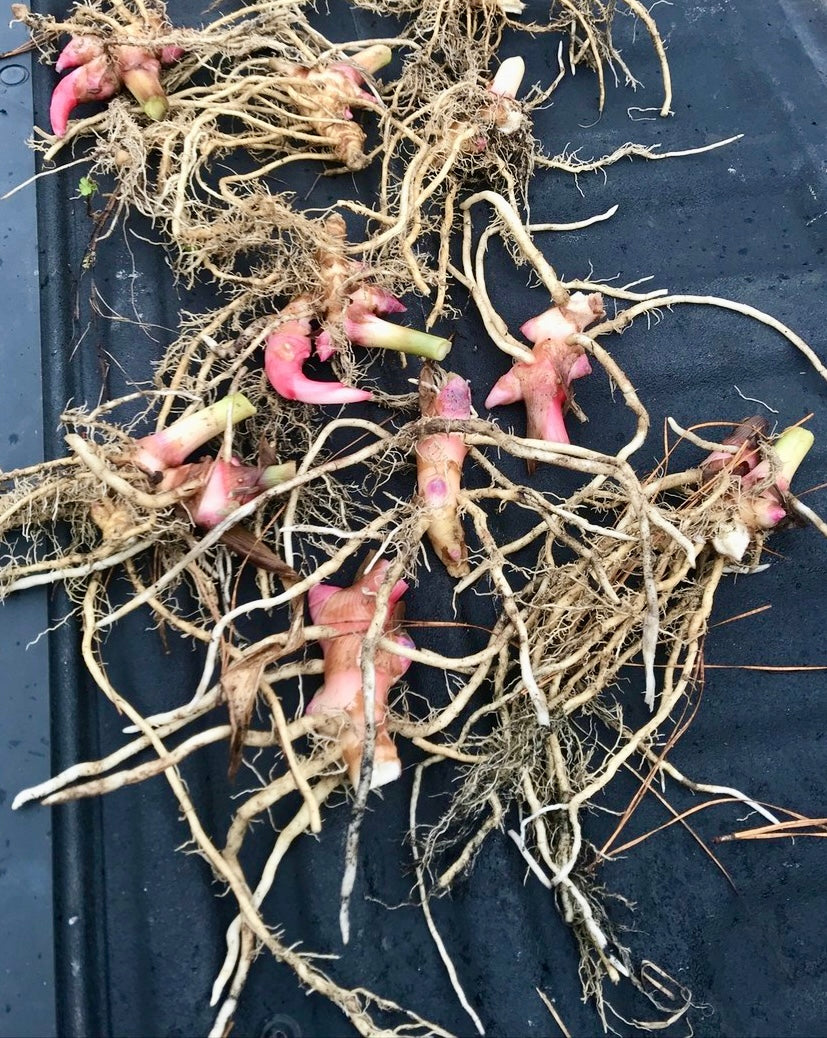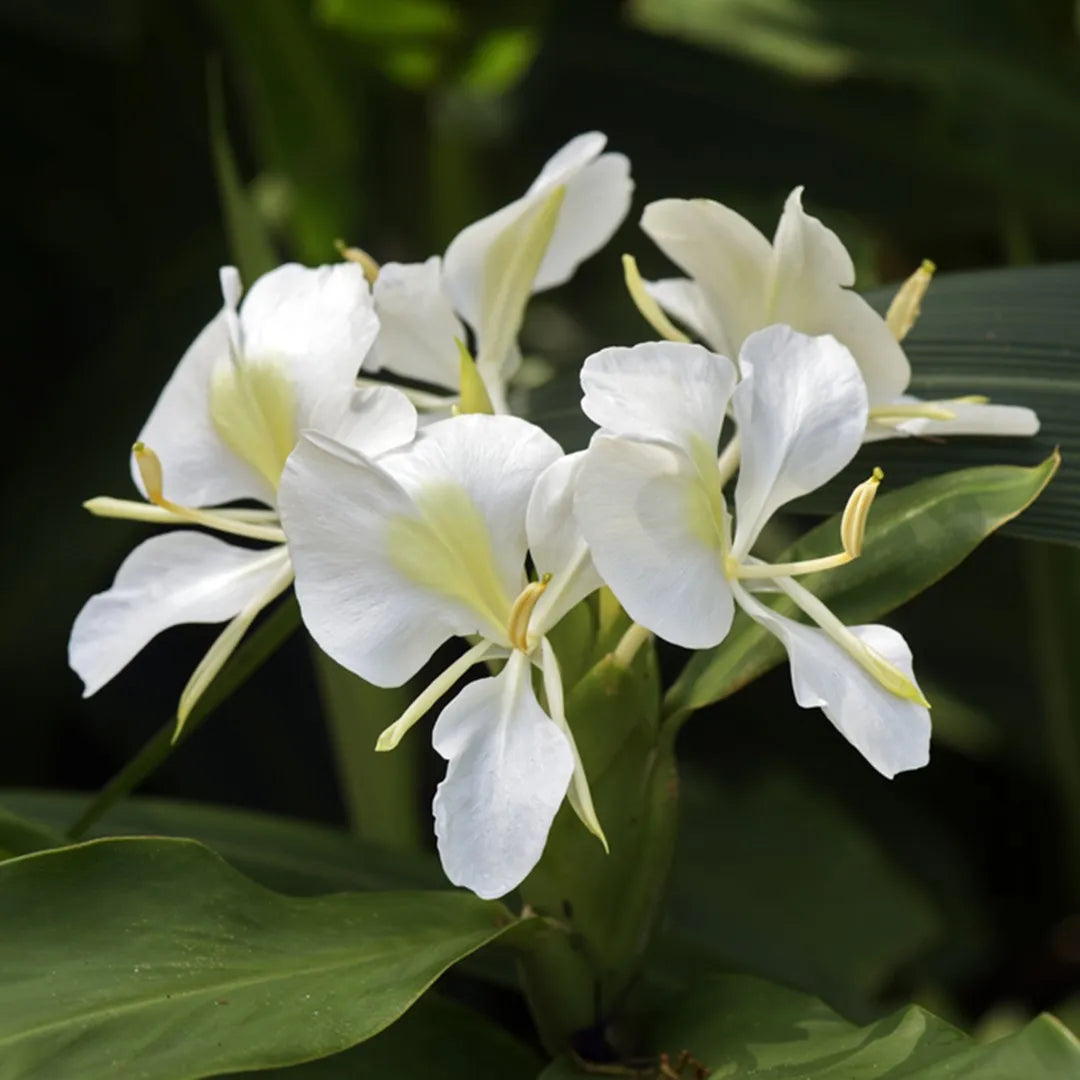Eden on Earth
White Ginger Lily - Rhizome
White Ginger Lily - Rhizome
Couldn't load pickup availability
SHIPPING NOW!
How to Plant and Grow White Ginger Lily Rhizomes (Hedychium coronarium)
The White Ginger Lily, also known as Butterfly Ginger, is a treasured perennial known for its intoxicatingly fragrant white flowers that resemble butterflies. It brings a lush, tropical feel to the garden with its tall canes of lance-shaped leaves.
1. Understanding Your Rhizome
-
What it is: A rhizome is a thick, fleshy underground stem that stores energy. It grows horizontally, sending up shoots (stems) and sending down roots.
-
Appearance: The rhizome will be firm, tan-colored, and may have several "fingers" or segments. Look for small nubs or "eyes," which are the growth points for new stems.
2. Planting Your Ginger Lily Rhizome
When to Plant: Plant outdoors in the spring after all danger of frost has passed and the soil has begun to warm up. You can also start them in pots indoors to get a head start.
Step 1: Choose a Location
-
Light: White Ginger Lily thrives in full sun to partial shade. In very hot climates, a location with morning sun and afternoon shade is ideal to prevent leaf scorch.
-
Soil: It requires rich, fertile, and consistently moist but well-draining soil. It's a great choice for boggy areas or near a pond. Amend the soil heavily with compost or other organic matter before planting.
Step 2: Planting the Rhizome
-
Depth: Dig a wide hole and plant the rhizome just deep enough so that the top is covered by 1-2 inches of soil.
-
Orientation: Place the rhizome horizontally in the soil with any visible growth points or "eyes" pointing upward.
-
Spacing: Give them room to spread. Space rhizomes about 2-3 feet apart.
-
Watering: Water thoroughly after planting to settle the soil.
3. Ongoing Care
💧 Watering
-
Moisture is Key: This plant loves water. The soil should be kept consistently moist to wet throughout the growing season, especially in the heat of summer. Do not allow the soil to dry out completely.
🌿 Fertilizing
-
Heavy Feeder: To support its vigorous growth and abundant flowering, ginger lily needs regular feeding.
-
How to Fertilize: Apply a balanced, all-purpose fertilizer once a month from spring through late summer.
✂️ Maintenance
-
After Blooming: Once a stalk has finished flowering, it will not bloom again. You can cut that stalk down to the ground to encourage new growth from the base and keep the plant looking tidy.
-
Grooming: Remove any yellow or brown leaves as they appear.
🌡️ Winter Care
-
In Warm Climates (Zone 8-10): The White Ginger Lily is a reliable perennial. The foliage will die back after a frost. Cut the dead stalks back to the ground and apply a thick layer of mulch (like pine straw or shredded leaves) over the area to protect the rhizomes.
-
In Cold Climates (Zone 7 and colder): The rhizomes must be lifted and stored for the winter.
-
After the first frost kills the foliage, cut the stalks down to about 6 inches.
-
Carefully dig up the rhizome clumps.
-
Allow them to air dry for a day or two in a shady spot.
-
Store the rhizomes in a box with slightly damp peat moss or sawdust to keep them from drying out completely. Keep them in a cool, dark place (like a crawlspace or unheated garage) where temperatures stay above freezing. Replant in the spring.
-
4. Blooming
-
Timeline: White Ginger Lily typically blooms from mid-summer until the first frost.
-
Patience: It may not bloom profusely in its first year as it directs energy towards establishing a strong root system.






